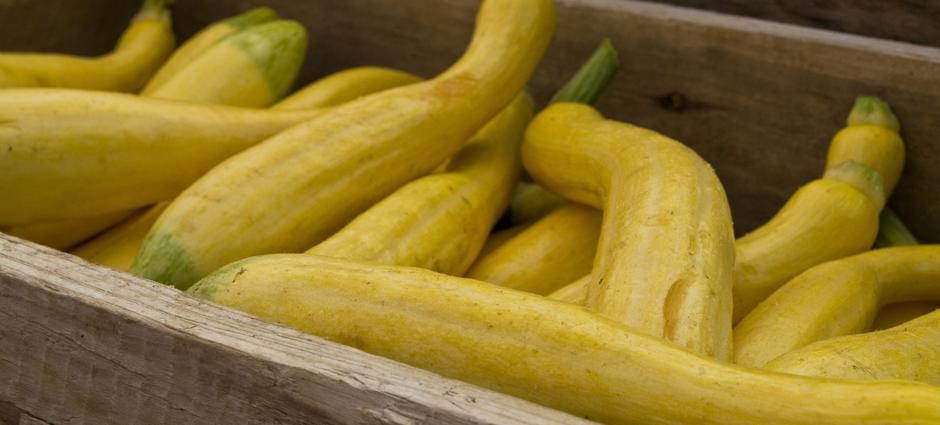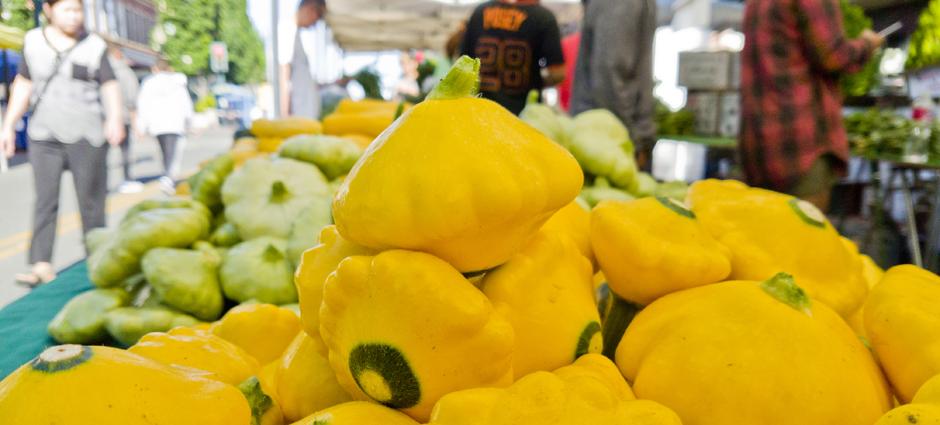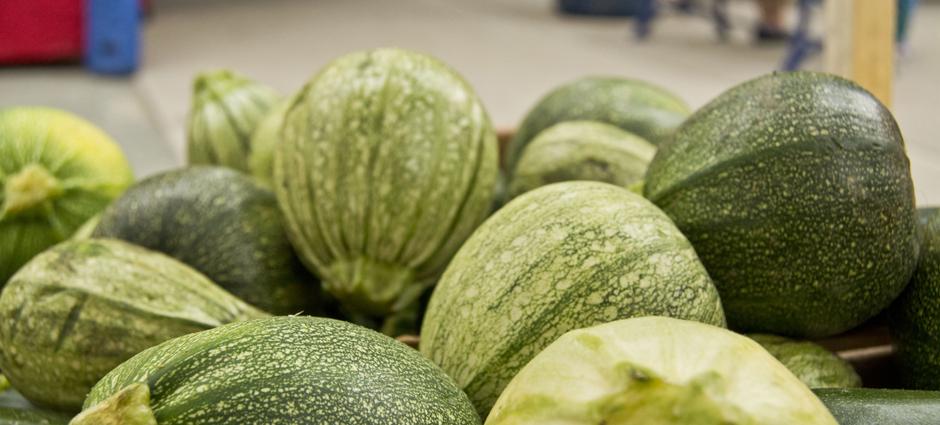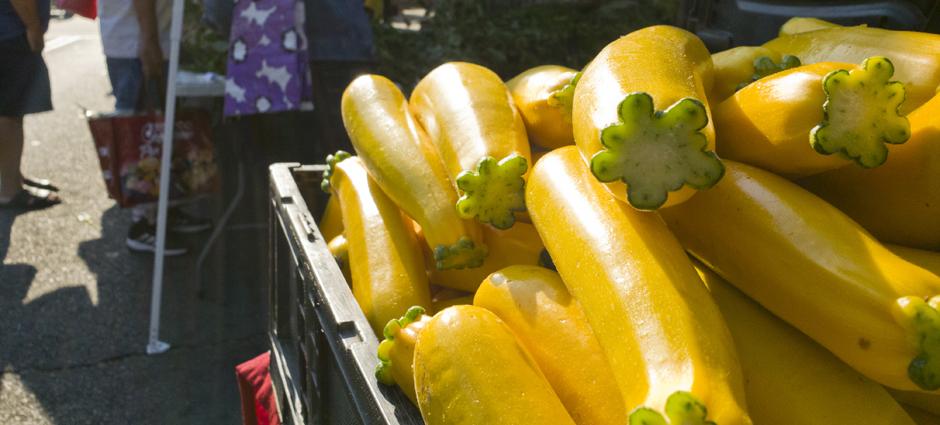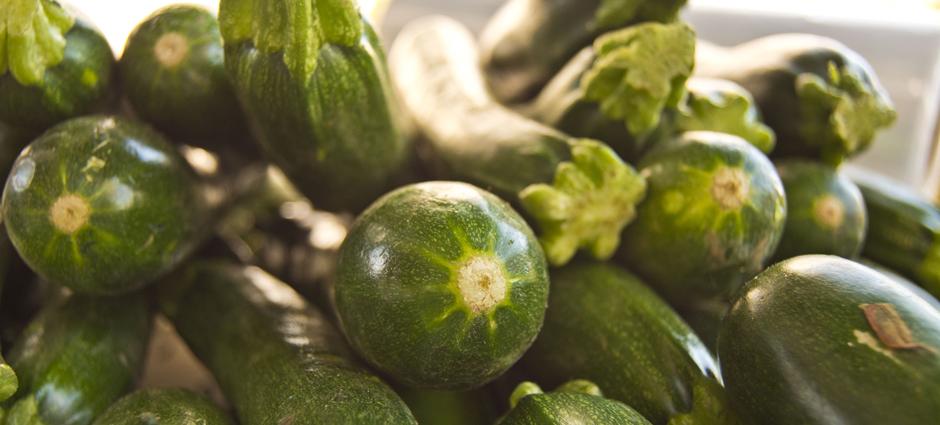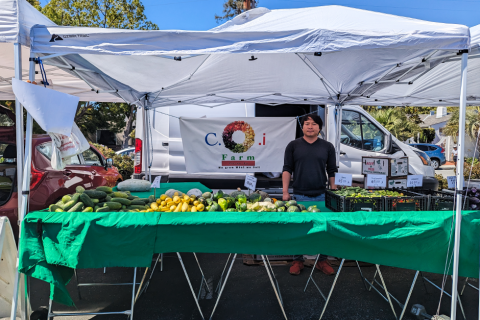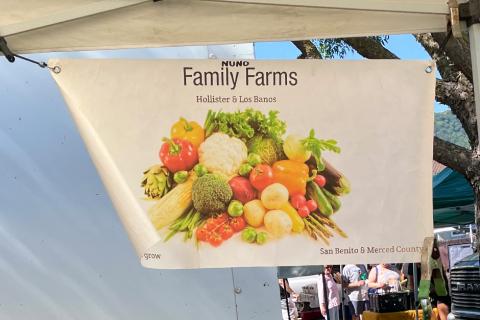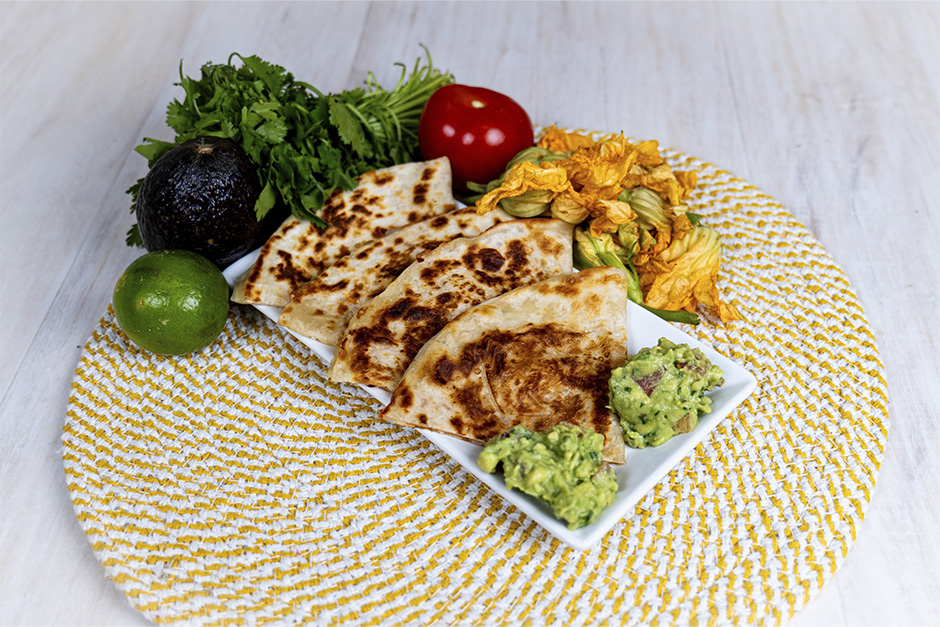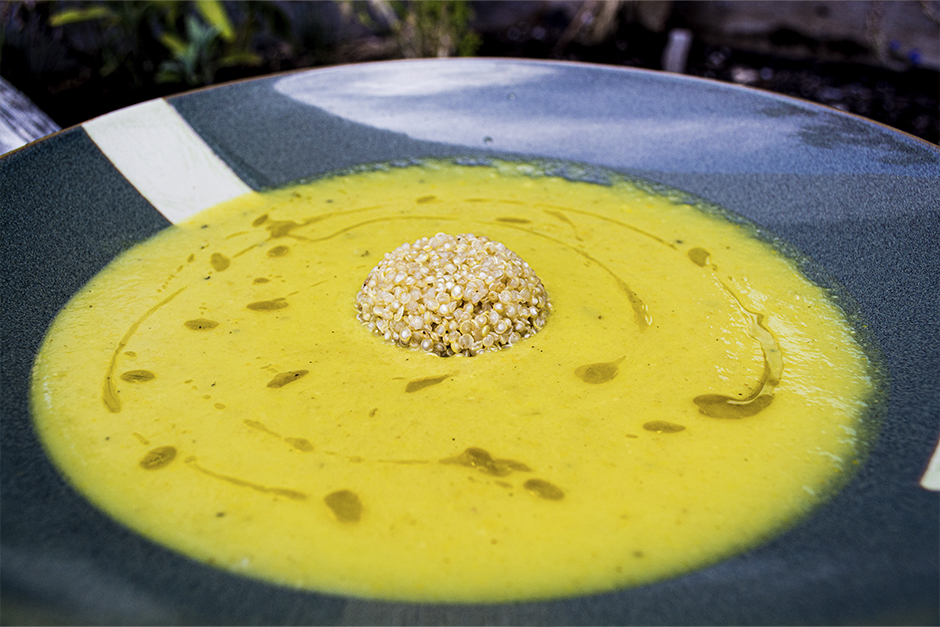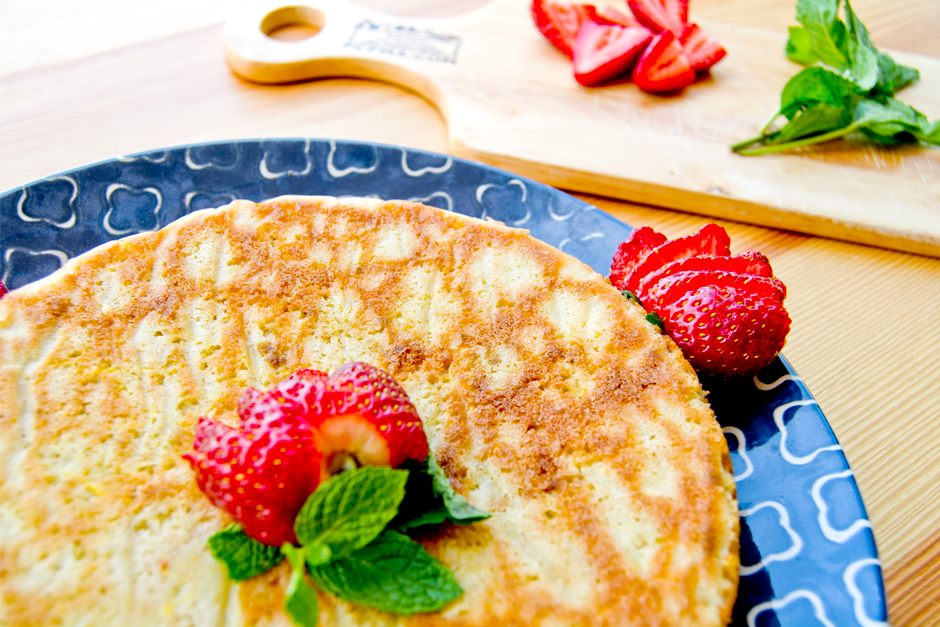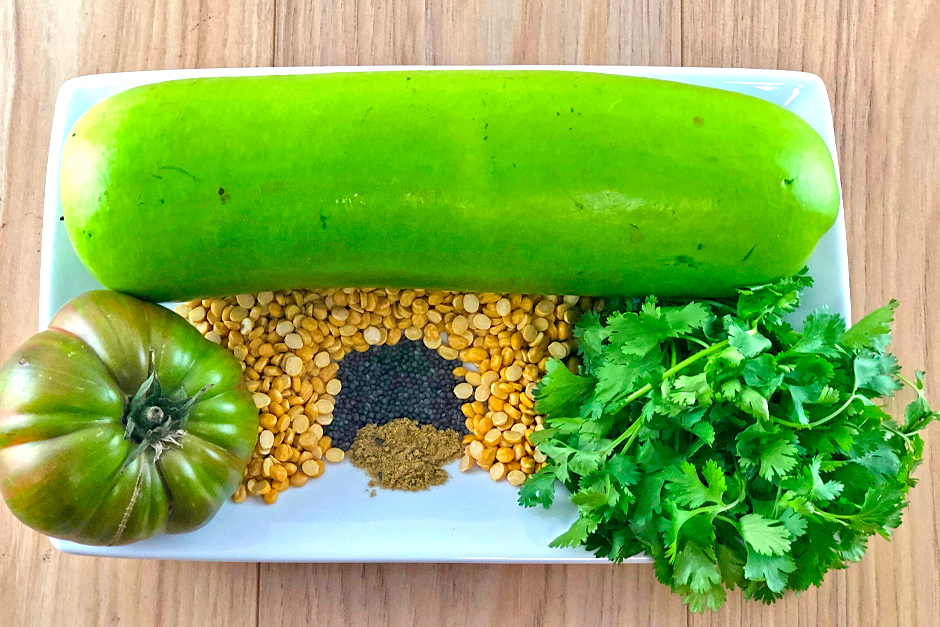Summer squash, a gourd, is a relative of both melons and cucumbers, with some growing on a vine and others on a bush. A very prolific vegetable, summer squash is a soft-shelled variety with thin edible skins and edible seeds, as compared to its hard-shelled winter squash with usually inedible skin. Summer squash has a tender flesh that requires only a short cooking time. Squash is very low in calories, high in vitamin C, and high in fiber.
Zucchini Squash: Green zucchini has soft, thin skin with a firm, mild-tasting, white flesh. This variety is versatile and can be eaten raw or uncooked; it’s ideal for both savory and sweet preparations.
Yellow Zucchini: Its shape is similar to that of green zucchini, but tastes a bit sweeter. Use it in sweet or savory recipes, raw or cooked — just as you would green zucchini.
Yellow Squash: These come in crookneck and straight varieties. They have smooth to slightly bumpy, thin skin, and creamy white flesh with larger seeds than many other varieties of summer squash.
Pattypan Squash: These delightfully-shaped squash come in both red and green varieties. They’re shaped like flat flying saucers with scalloped edges. The flavor is mild and the texture is denser than other squash. Larger ones are good for stuffing.
Cousa squash: A paler squatter version of the zucchini with paler green skin. It has a thin skin with a light texture and slightly sweet flavor. Prepare it just as you would any other variety of summer squash.
Zephyr Squash: A two-toned hybrid between yellow crookneck, delicata, and yellow acorn squash. It has firm flesh and a long, cylindrical pale yellow body with a distinct bottom portion that can vary in hue from pale to deep green. Use this squash just as you would the other varieties.
Globe (or Eight-ball) Squash: Short and round squash with dark green skin like a zucchini. Flavor and texture are the same as zucchini and works well when stuffed or sautéed.
The Lowdown
Season
Summer
Color
Yellow, Pale green, Dark green
Select
Select squash that have a shiny, bright colored skin, are heavy for their size, firm, and free of bruises and cracks. Do not select squashes that are overly large because they tend to be fibrous and their flavor can be bitter.
Store
Handle summer squash with care because they are damaged very easily. They can be stored for four to five days if placed in a perforated plastic bag inside the refrigerator. Do not wash until ready to use
